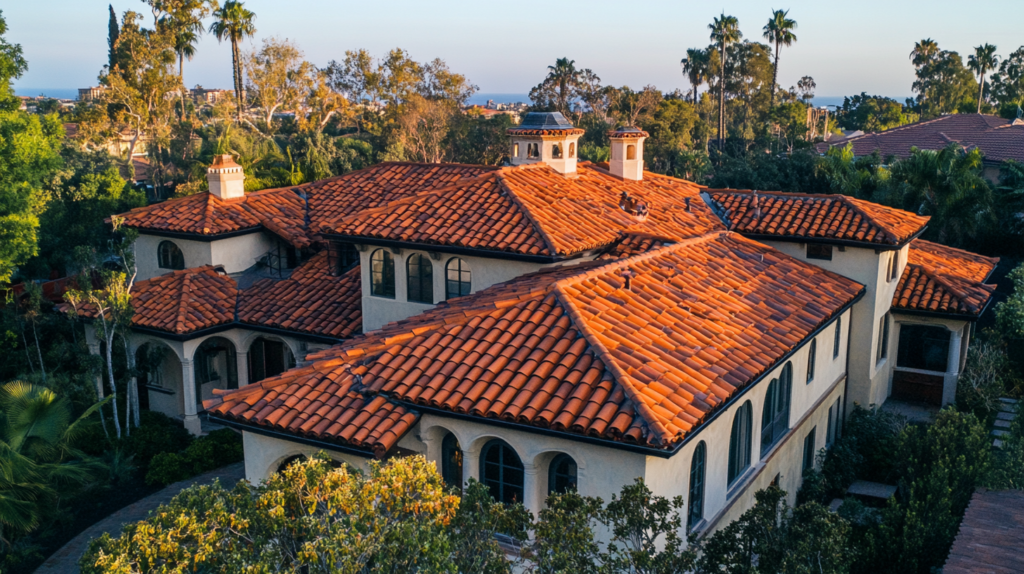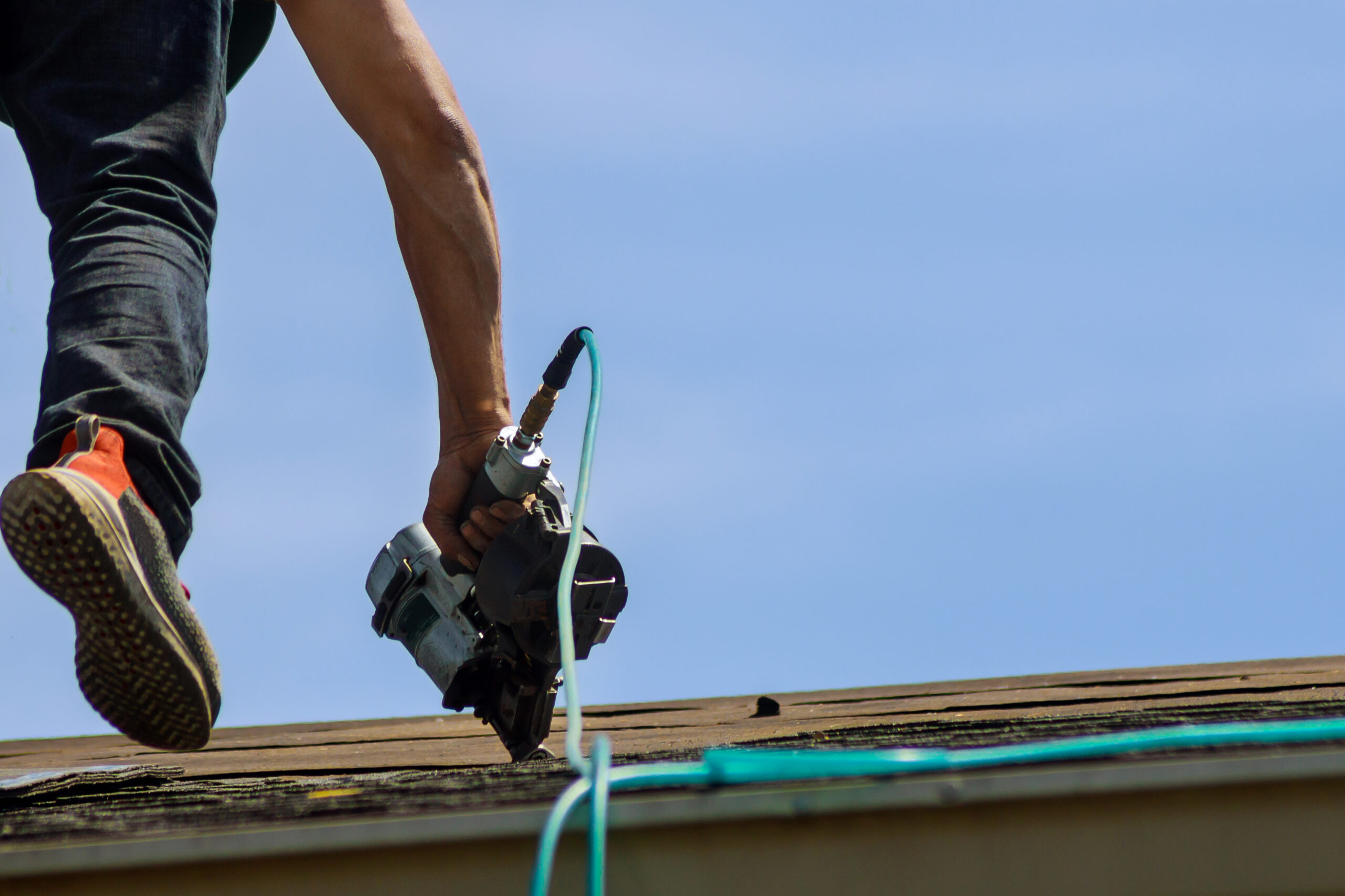The Impact of San Diego’s Climate on Roof Longevity
5.8 Min Read
San Diego is known for its beautiful weather, but how does this climate affect the longevity of your roof? Understanding the impact of San Diego’s unique climate on roofing can help homeowners make informed decisions about roof maintenance and replacement. This article will explore the various climatic factors affecting roof longevity in San Diego and provide practical roof maintenance tips to extend the life of your roof.
How San Diego’s Climate Affects Roof Longevity
San Diego’s climate is characterized by mild, wet winters and hot, dry summers. This Mediterranean-like climate presents both benefits and challenges for roof longevity.
Sun Exposure
San Diego receives an abundance of sunshine throughout the year. While this is great for outdoor activities, prolonged sun exposure can have a detrimental effect on roofing materials. UV rays can cause roofing materials to deteriorate over time, leading to cracks, fading, and brittleness. Asphalt shingles, in particular, can lose their protective granules due to UV exposure, reducing their effectiveness.

Temperature Fluctuations
San Diego experiences significant temperature fluctuations, especially between day and night. These fluctuations can cause roofing materials to expand and contract, leading to stress and potential damage. Over time, this can result in the formation of cracks and leaks, which can compromise the integrity of the roof.
Moisture and Humidity
Although San Diego is relatively dry, the winter months bring increased moisture and humidity. This can be problematic for roofs, as excess moisture can seep into roofing materials and cause mold, mildew, and rot. Additionally, the salty air from the nearby ocean can accelerate the corrosion of metal roofing components, such as nails and flashing.
Common Roofing Materials in San Diego
Different roofing materials react differently to San Diego’s climate. Here are some common roofing materials and their performance in this environment:
Asphalt Shingles
Asphalt shingles are a popular roofing material due to their affordability and ease of installation. However, they can be vulnerable to UV damage and temperature fluctuations. To maximize the lifespan of asphalt shingles, consider choosing UV-resistant options and ensuring proper ventilation to reduce heat buildup.
Tile Roofing
Tile roofing, including clay and concrete tiles, is well-suited for San Diego’s climate. Tiles are durable, resistant to UV rays, and can withstand temperature fluctuations. However, they can be heavy, so it’s essential to ensure that your roof structure can support the weight of the tiles.
Metal Roofing
Metal roofing is another excellent choice for San Diego homes. Metal roofs are highly durable, resistant to UV rays, and can handle temperature fluctuations well. Additionally, they are less susceptible to moisture damage and corrosion, making them a long-lasting option for coastal areas.
Flat Roofing
Flat roofs are common in commercial buildings and some residential properties. They require regular maintenance to ensure proper drainage and prevent water pooling, which can lead to leaks and structural damage. Applying reflective coatings can help reduce UV damage and heat buildup on flat roofs.
Roof Maintenance Tips for San Diego Homeowners
Regular maintenance is crucial to extend the life of your roof, especially in San Diego’s unique climate. Here are some practical tips to help you keep your roof in top condition:
Regular Inspections
Schedule regular roof inspections to identify and address potential issues before they become major problems. Inspect your roof at least twice a year, ideally in the spring and fall, and after any severe weather events. Look for signs of damage, such as cracked or missing shingles, loose tiles, and rusted metal components.
Clean Gutters and Downspouts
Clogged gutters and downspouts can cause water to back up and damage your roof. Clean them regularly to ensure proper drainage and prevent water-related issues. Consider installing gutter guards to reduce the frequency of cleaning.
Trim Overhanging Branches
Overhanging branches can damage your roof during windy conditions and provide a pathway for pests. Trim back any branches that are too close to your roof to prevent potential damage and keep your roof clear of debris.
Address Moss and Algae Growth
Moss and algae can retain moisture and cause damage to roofing materials. Remove any moss or algae growth promptly using a soft brush and a mixture of water and mild detergent. Avoid using pressure washers, as they can damage shingles and tiles.
Ensure Proper Ventilation
Proper roof ventilation helps regulate temperature and moisture levels, reducing the risk of damage from heat buildup and condensation. Ensure that your attic has adequate ventilation, and consider installing ridge vents or soffit vents to improve airflow.
Apply Protective Coatings
Consider applying protective coatings to your roof to enhance its durability and resistance to UV rays and moisture. Reflective coatings can help reduce heat buildup, while waterproof coatings can prevent water infiltration and damage.

When to Consider Roof Replacement
Even with diligent maintenance, roofs have a finite lifespan. Here are some signs that it may be time to consider a roof replacement:
Age of the Roof
Most roofing materials have a limited lifespan. Asphalt shingles typically last 20-30 years, while tile and metal roofs can last 50 years or more. If your roof is approaching the end of its expected lifespan, it may be time to plan for a replacement.
Frequent Repairs
If you find yourself frequently repairing your roof, it may be more cost-effective in the long run to invest in a new roof. Frequent repairs can indicate underlying issues that are not being addressed, leading to ongoing problems and expenses.
Visible Damage
Significant visible damage, such as large cracks, missing shingles, or extensive moss growth, can compromise the integrity of your roof. If the damage is widespread, a roof replacement may be necessary to ensure the safety and protection of your home.
Energy Efficiency
Older roofs may lack proper insulation and ventilation, leading to higher energy bills. Upgrading to a new, energy-efficient roof can improve your home’s insulation and reduce heating and cooling costs.
Conclusion
San Diego’s climate presents unique challenges for roof longevity, but with proper maintenance and the right roofing materials, you can extend the life of your roof and protect your home. Regular inspections, cleaning, and addressing issues promptly are essential to keeping your roof in top condition. When it comes time for a replacement, consider materials that are well-suited to San Diego’s climate, such as tile or metal roofing. By taking these steps, you can ensure that your roof provides reliable protection for many years to come.
Call to Action
If you’re looking to ensure the durability and longevity of your roof in San Diego, trust the experts at Frontline Roofing. Our team of experienced professionals is dedicated to providing top-quality roofing solutions tailored to the unique demands of San Diego’s climate. Whether you need routine maintenance, repairs, or a full roof replacement, we’re here to help. Contact Frontline Roofing today for a consultation, and let us protect your home with our superior roofing services.
continue reading
Related Posts
When it’s time to repair or replace your roof, one […]
When it comes to commercial and industrial roofing in California, […]
Your roof is your home’s first line of defense against […]






